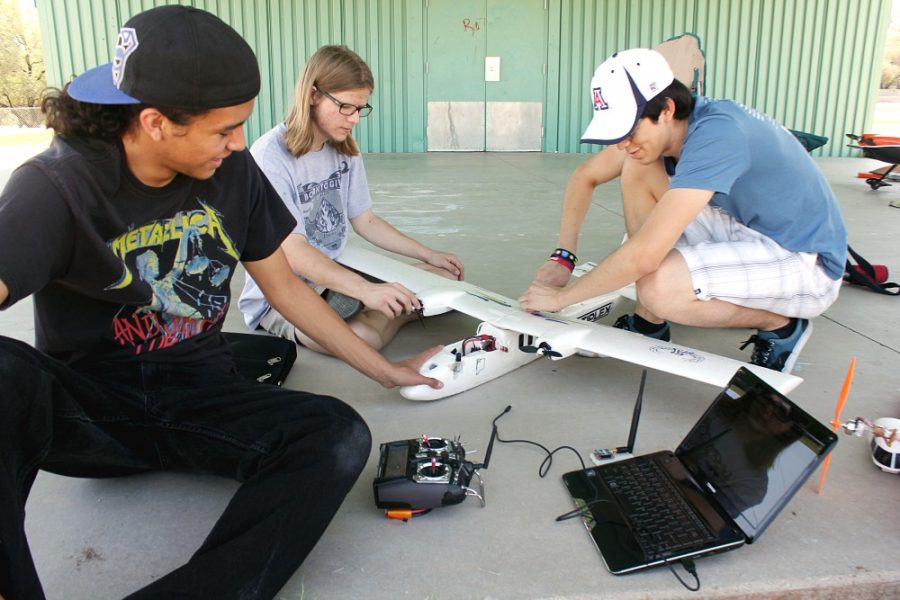The UA Aerial Robotics Club is getting ready to take off this semester.
Started by a group of aerospace engineering majors a decade ago, the UA Aerial Robotics Club is open to students interested in flying and building small remote control and computer-operated airplanes.
Over the years, the club has entered a variety of competitions regarding aerospace development and innovation. One of the biggest developments in the field is the use of autonomous aircrafts: planes that are able to fly and locate objects in the sky without any hands-on direction from a pilot.
“It’s cool that you do not need human interaction,” said Josh Alexander, aerospace engineering junior and president of the UA Aerial Robotics Club. “The plane will fly itself. You tell it where it needs to go and it will land whenever it’s done.”
With computer programming, the autonomous aircrafts use GPS coordinates to pre-position paths the plane can take. This year, the club wants to attract more students who are interested in programming, as a large majority of their members currently have a great knowledge about aerospace mechanics but not computers.
“It is a lot of testing and trying different things to see if it will work,” said Jose Valdez, a biomedical engineering sophomore and public relations officer for the club. “It is a lot of aerospace but is highly computer science and electrical and also some optics for the optical system part of the plane.”
The group meets every Friday at 5 p.m. on the north side of the Aerospace and Mechanical Engineering building, room 410, to construct autonomous planes along with other remote-controlled aircrafts. Alexander said it takes about 20 hours to plan and build an airplane, and when it is finished it is tested the following fly day. A time, place and day to fly and test the aircrafts is determined during the meeting and are typically called fly days, where members get together and track the progress of their projects.
“It was my first time flying one of the planes,” said Marvin Portillo, club member and aerospace mechanical engineering sophomore during a fly day last Saturday. “It was fun and I plan on coming to more of these.”
The club will be entering in two competitions this year. The first one, which will take place on April 26 in Boulder, Colo., is SparkFun Electronics’ competition where participants enter see who can fly an autonomous plane the fastest around a building.
“For this we are actually replacing the engine we have in our autonomous plane for a faster one,” Valdez said.
The second and final competition for the club this year is the Association for Unmanned Vehicle Systems International Seafarers competition, which is a national competition that takes place every June.
“Last year we got eighth place after we were unable to fly the plane autonomously,” Alexander said. “We want to do a lot better this year.”









